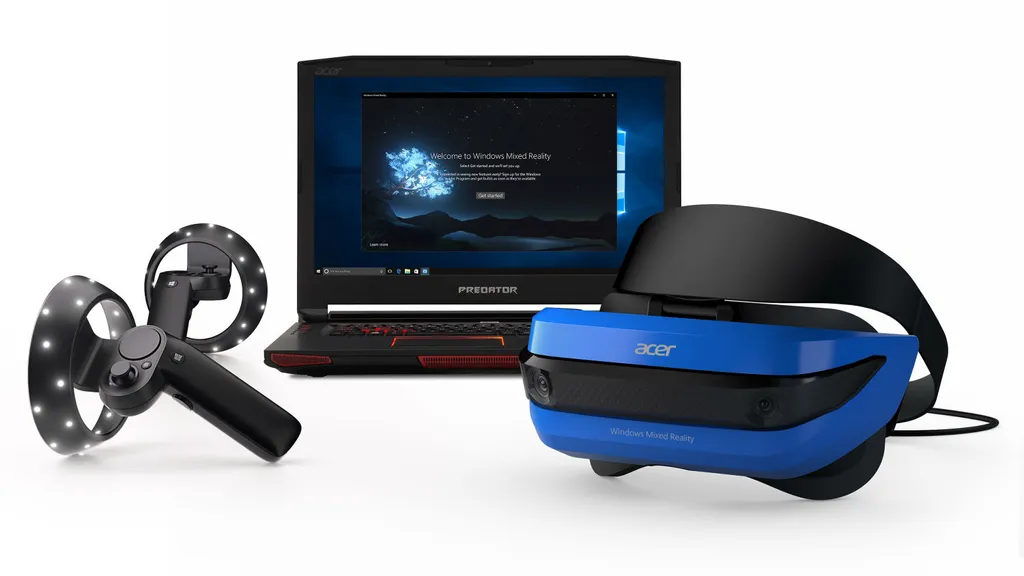Going all-in on Microsoft’s new Windows 10 VR platform will cost you at least around $900.
By all-in, we mean buying not just one of the new VR headsets (made in partnership with several manufacturers) when they launch later this year but the PC to go along with it as well as motion controllers bundled in with the device. These devices may not require external markers for positional tracking as seen with the Oculus Rift and HTC Vive, but they still need a relatively powerful PC to run on. Fortunately, Microsoft has a plan for that.
Along with several other details about its Mixed Reality platform, the company today announced two new branches of PCs that are certified as ready for use with the headsets. The first line, simply dubbed Windows Mixed Reality PCs, includes desktops and laptops with integrated graphics that will run headsets at 60 frames per second. The second like is Windows Mixed Reality Ultra PCs, featuring “discrete graphics” and running apps at 90 frames per second.
Microsoft says that these PCs will start at $499. VR headsets bundled with six degrees of freedom (6DOF) motion controllers start at $399, so that’s around $900 for everything you need to jump straight into the entire ecosystem, though it will mean your experiences run at 60 fps, not 90.
In the past we’ve tried Windows headsets running at 60 fps and found them to have more blur than we’re used to, though there weren’t the final versions. 90 fps is undoubtedly preferable, but we don’t know at what price these PCs will start at.
For comparison’s sake, the Oculus Rift currently costs $399 in a sale and, at its last Connect conference, Oculus introduced a $500 PC that met the minimum spec to run its headset, so you could go all in on Rift for the same price right now. The sale ends in a few weeks, though, and will add $100 on top of that. The HTC Vive, meanwhile, costs $599. It doesn’t look like going all-in on Windows VR will be dramatically cheaper than grabbing a Rift or Vive, then.
The key difference is that these Windows headsets use inside-out tracking, locating your position in VR using sensors fitted to the headset itself, while Rift and Vive rely on external sensors that can clutter up your room. We can’t speak to the final quality of the headsets themselves, though, so we don’t know if they offer a comparable experience yet.
So here’s the big question: will you pay $900 to go all-in on Windows VR?


























